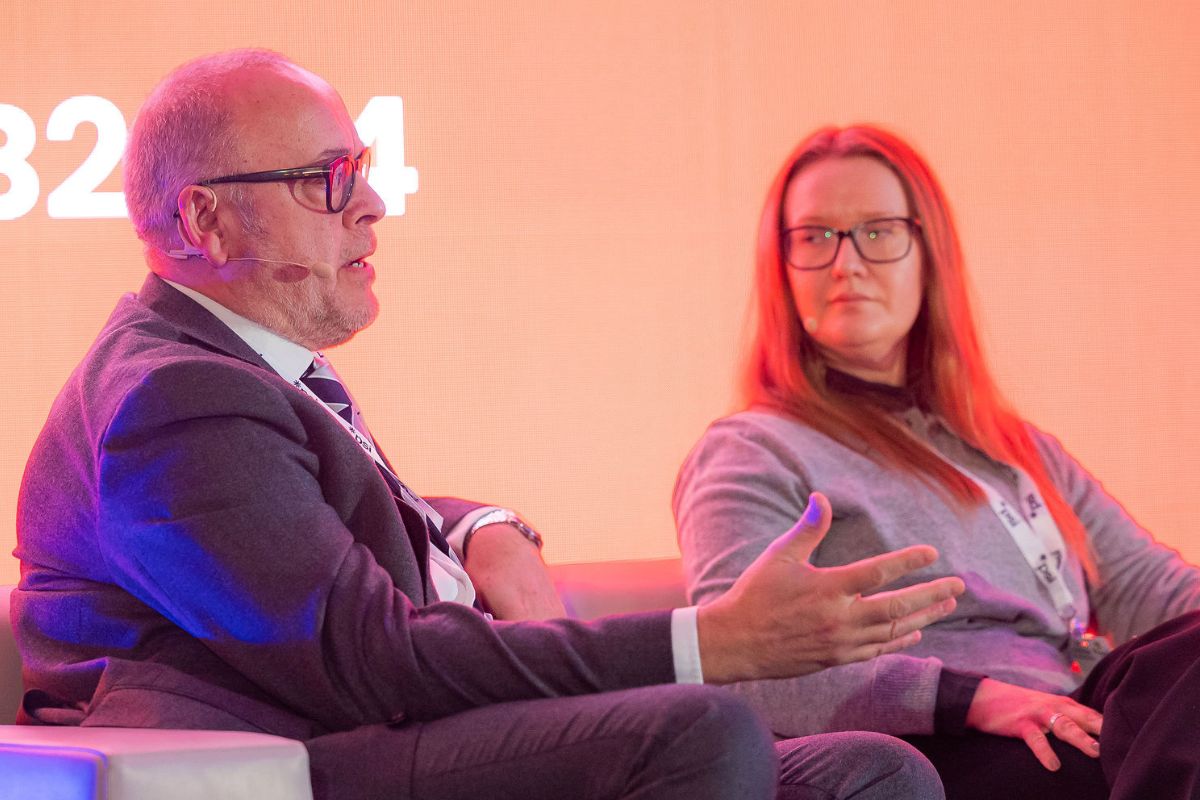Quality audio is critical for the success of the post-pandemic classroom

At the peak of the pandemic crisis the global education system saw almost 1.6 billion children in 195 countries unable to access physical classrooms. Yet as schools emptied, learning didn’t grind to a halt – modern technology solutions facilitated the online learning experience for education systems worldwide.
Today many educational institutions are evaluating the return to the classroom or are transitioning back to a mix of both online and in-person teaching. This presents a clear opportunity for innovation and improvement. New ways of living, working, and learning have been unlocked and students and educators are increasingly looking to implement hybrid learning models that can enrich the learning experience.
The compelling case for shifting to hybrid
To drive continuity in learning, the adoption of online video conferencing, learning-management platforms and virtual assessment tools have skyrocketed. Many educators and students today are embracing a more hybrid approach having recognized its inherent benefits. The use of virtual collaboration tools will be a table-stake in the future as the impact of digital technologies has already reshaped education forever.
More widespread implementation of online curriculums is an opportunity to improve the quality and reach of education—to make it more inclusive and equitable. Hybrid learning can often level the playing field as there is an opportunity to universalise education for some of the most vulnerable and marginalized population groups.
Beyond that, there are clear cost savings associated with remote learning. This has been made possible by reducing reliance on physical resources and minimizing travel time. Students are also able to learn at their own pace and can catch up or revisit a topic with ease. Alongside this, going digital means that educators can improve the quality and relevancy of their curriculum by updating resources and materials in real time.
Other longer-term benefits are also becoming clear. Learning and collaborating online is helping to prepare students with the kind of organizational acumen, emotional intelligence and self-discipline needed for future professional employment. In fact, two-thirds of US students would welcome more online classes post pandemic. And 61% in the US say that online courses can be just as legitimate as face-to-face courses, when well designed. Hybrid models also correlate positively with staff retention, a UK survey concluded that because of the shift to online learning, the percentage of senior teachers planning to leave the profession has halved since 2019.
Why robust audio matters
Regardless of where it takes place, effective learning is dependent on student engagement. When compared with the physical classroom, there are a myriad of potential issues that can arise with distanced learning, this includes poor Wi-Fi connectivity, distorted video, and interruptive background noises. While video and content have played a pivotal role in ensuring teachers and students can connect, the importance of high-quality audio is often overlooked. Hours of online classes mean students need to focus harder to process non-verbal cues like facial expressions, body language and the auditory tone; the strain of which can often lead to cognitive fatigue.
Poor audio experiences can compound this further – acting as a drain on students’ emotional and mental wellbeing – negatively affecting the ability to focus. The impact of these poor audio experiences is potentially significant. EPOS found that 35% of end-users feel frustrated, irritated, and annoyed because of unsatisfactory audio equipment, while 25% cite the experience as stressful.
When it comes to hardware, many students rely on consumer-grade headsets with questionable durability, limited IT support and manageability. Add to this the challenges presented by noisy environments (whether dorm rooms, houses, cafes), and the problem of multiple participants speaking at the same time, and the predicable result is fatigue and lack of motivation.
Invest in the right solutions to meet different needs
The need for better connectivity and robust audio and video devices to facilitate seamless learning has never been more pressing. There are significant benefits associated with pairing professional headsets with learning software. The right tools can deliver a stable experience, regardless of noise levels, by making use of both active noise cancellation and passive noise dampening. They can also go a long way in eliminating miscommunication and reducing the need for repetition.
The digitization of schools was already underway before the pandemic, with the widespread introduction of tools like interactive whiteboards and Chromebooks. But the pandemic will be remembered as a great accelerator of these trends. Over the past year, the education sector was forced to react quickly, often in a piecemeal manner. As a result, many schools did not have the time and experience to identify the right tools needed for students. After all, there are many factors to consider: interoperability with existing infrastructure, class sizes and affordances, comfort, and hearing protection.
The cusp of a new dawn for education
There isn’t just one style of learning so why should there be just one type of learning device? Educators need to re-examine current solutions and investment priorities to ensure that the right tools are in place to meet different needs. This includes considering design alterations that must be made to deliver positive experiences – for example, a greater need to think about safety measures such as acoustic shock protection for younger learners. There is also an imperative to consider the needs of different age-groups, including device sizing and wearer comfort.
High-quality audio will prove to be a real differentiator in realizing students’ potential. Hybrid learning means that students and teachers can be anywhere on any given day – whether it’s in the classroom, at home or on the go. To ensure that hybrid learning remains effective as students begin to re-enter classrooms in some capacity, educators and students must consider and optimize the solutions available. This will improve the learning experience of students both inside and outside of physical classrooms.
Theis Mork – Vice President Of Product Management EPOS











Responses